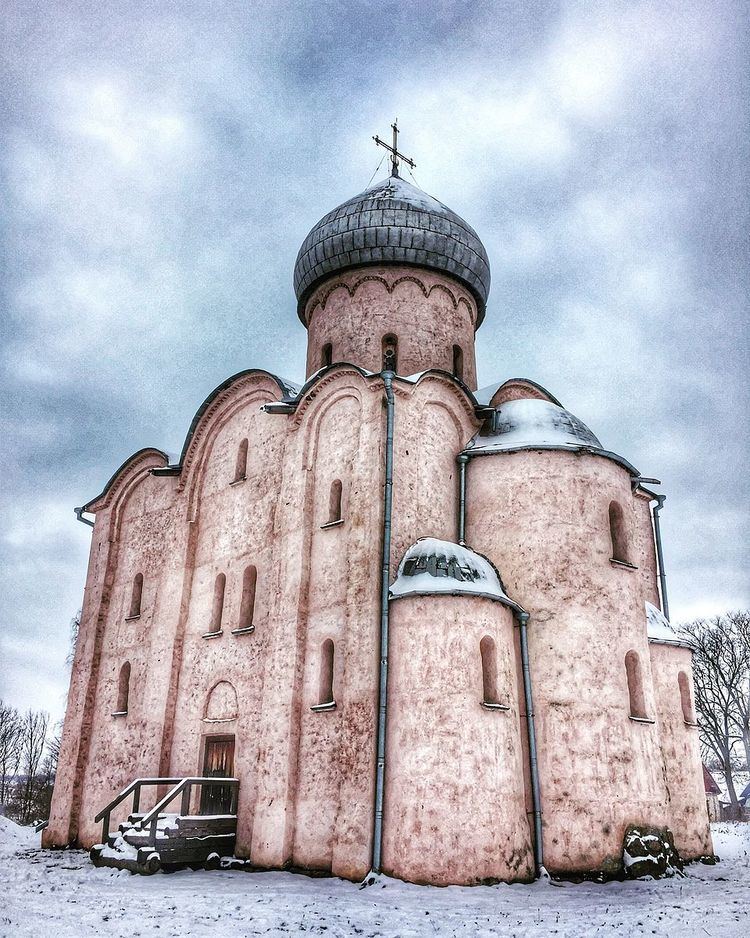Phone +7 911 628-22-10 | ||
 | ||
Similar Church of the Transfigu, Cathedral of St Sophia - N, Yuriev Monastery, Theodore Church on Creek, Transfiguration Church in Kovalyovo | ||
Tours tv com spasa nereditsa church
The Saviour Church on Nereditsa (Russian: Церковь Спаса на Нередице, Tserkov Spasa na Nereditse) is an orthodox church built in 1198. It is one of Russia's oldest churches. The Transfiguration Church, located in Novgorodsky District of Novgorod Oblast, Russia, 1.5 kilometres (0.93 mi) south of Veliky Novgorod in the village of Spas-Nereditsy on the right bank of the Maly Volkhovets River on a small Nereditsa Hill next to the Rurik hillfort.
Contents
The Saviour Church on Nereditsa is on the World Heritage list as a part of object 604 Historic Monuments of Novgorod and Surroundings. The building has been designated an architectural monument of federal significance (#5310113002).
History
The church was founded in 1198 by Prince Yaroslav Vsevolodovich and painted with frescoes in 1199. The church was located outside the city of Novgorod but close to the residence of the prince, and the church was regarded by the prince as the place for his future tomb. In 1903-1904 it was measured and extensively restored by Pyotr Pokryshkin.
During World War II the church was located on the front line between 1941 and 1943 and was destroyed. It was subsequently restored, however, most of the frescoes could not be saved, and are currently known because the pre-war photos exist.
Architecture
The small stone church is built as a cube and has one dome. It is based on four pillars and has three apses at the eastern side. The type of a small church was developed in Novgorod in the end of the 12th century, and there are several churches of this type, in Novgorod and in Staraya Ladoga.
Frescoes
The frescoes were created by eight to ten artists. They covered all the interior of the church, including the pillars, the walls, the ceiling, and the dome. There is no apparent system in creating the frescoes. Possible, the painters did nbot know each other and had different styles. In particular, normally a fresco of Christ the Saviour should be painted in the dome. However, for the Saviour Church on Nereditsa, the dome was occupied by the Ascencion. Christ was painted in the dome in Byzantine Empire already in the 9th century, and painting other frescoes in the dome was at the time the sign that the church belongs to a highly peripheral region. The most impressive fresco in the church was considered to be the Last Judgment, painted over the whole western wall. Only fragments of this fresco survived. In 1246, a fresco portrayed Prince Yaroslav Vsevolodovich was painted in the southern wall.
